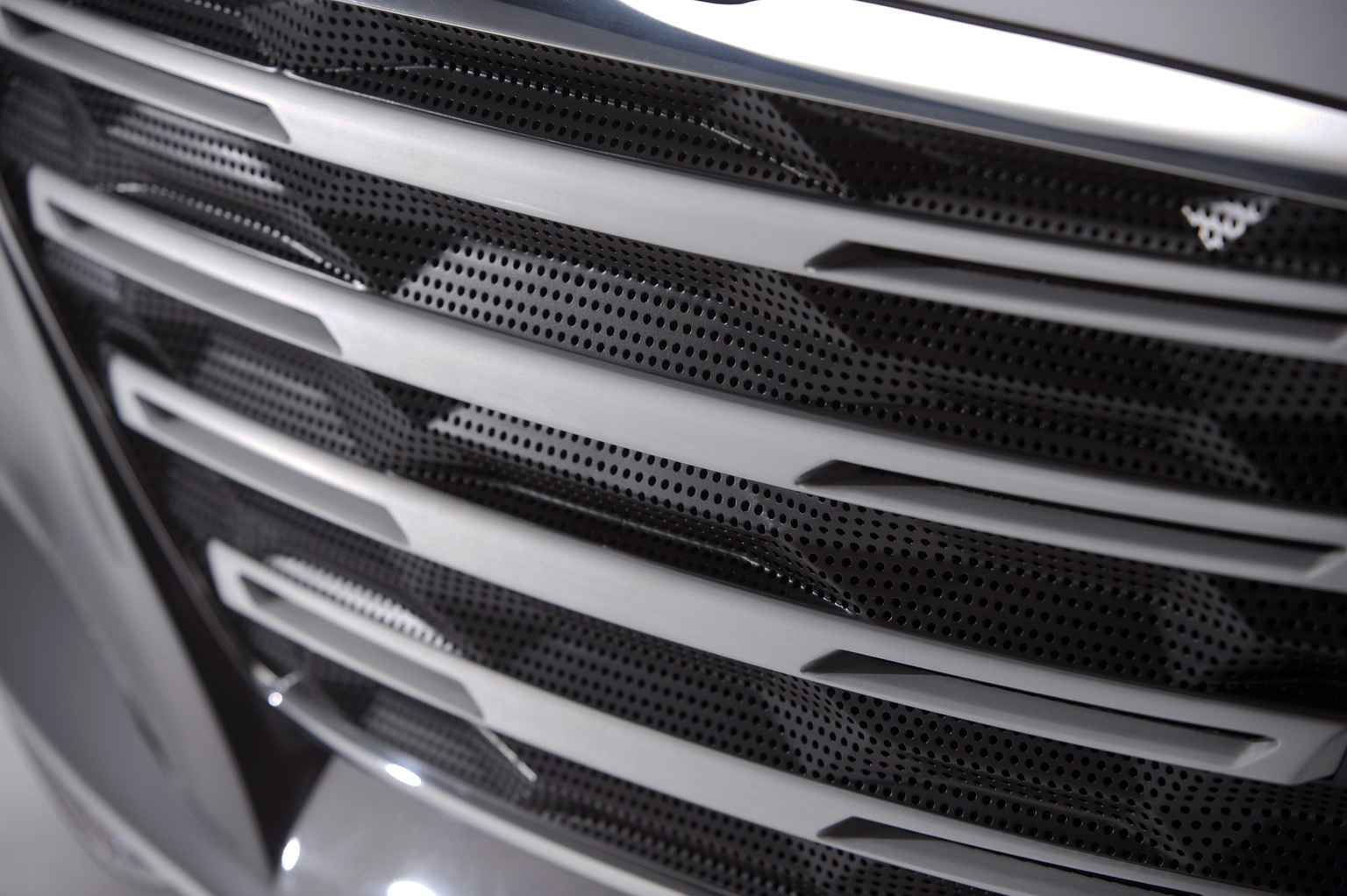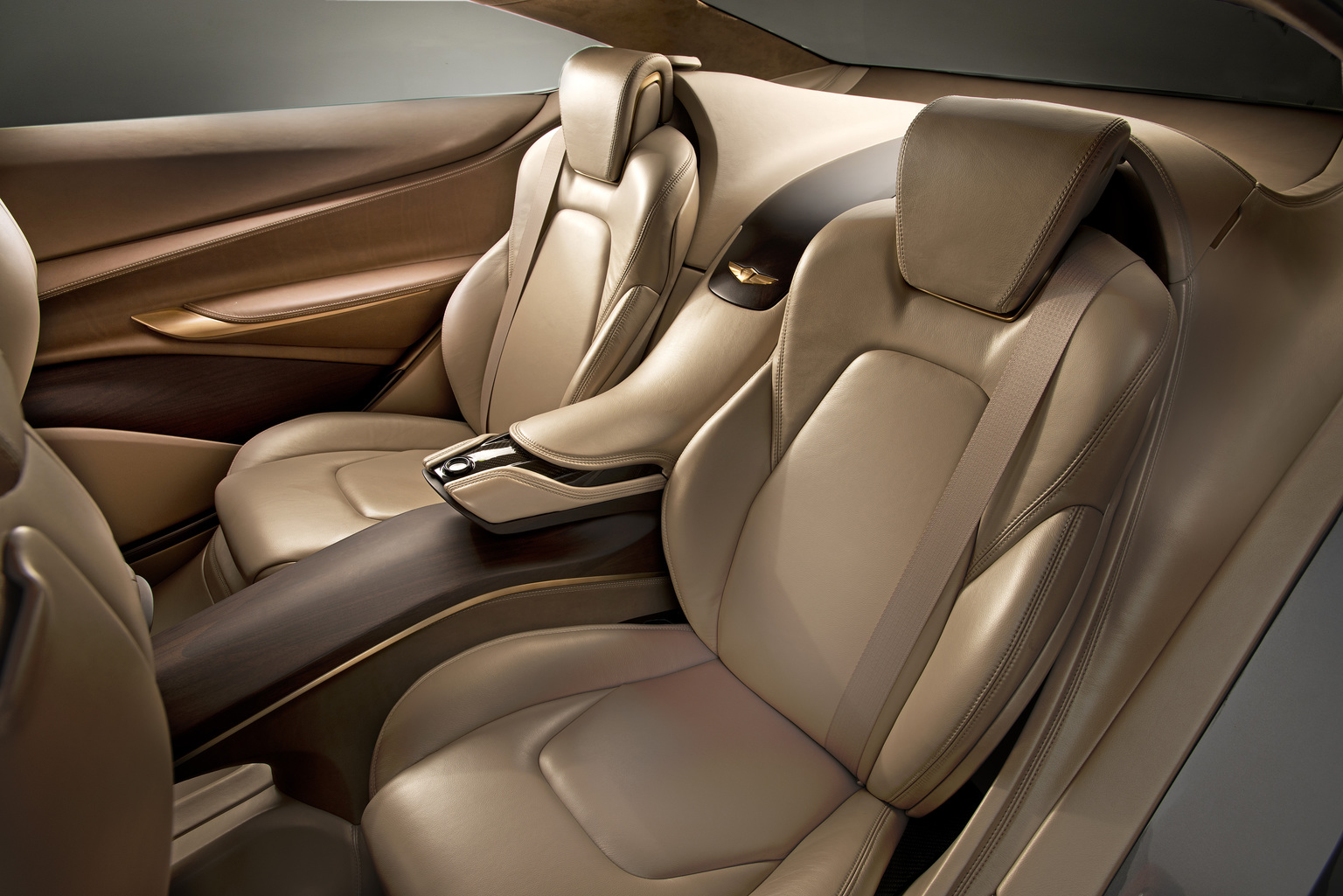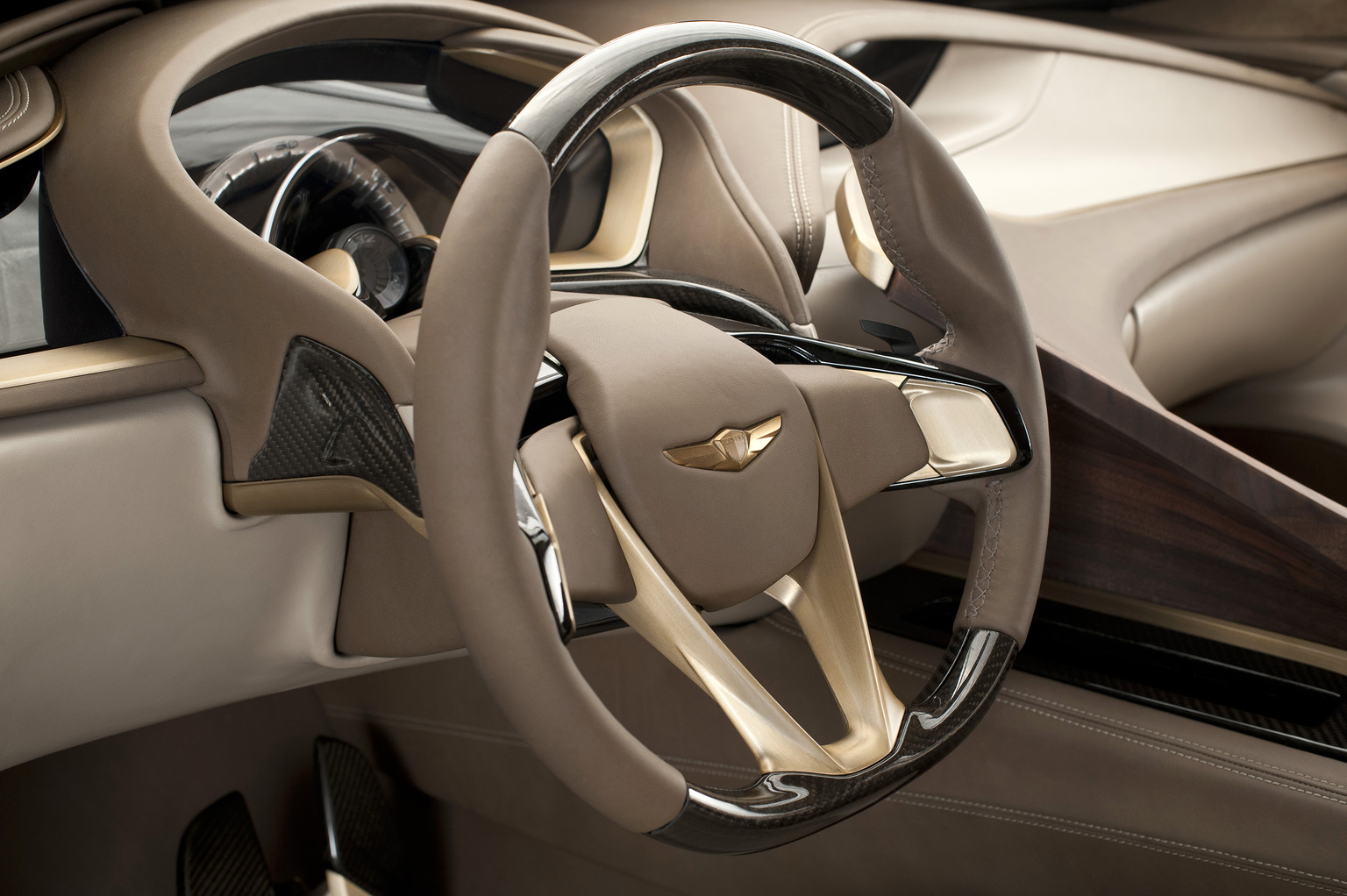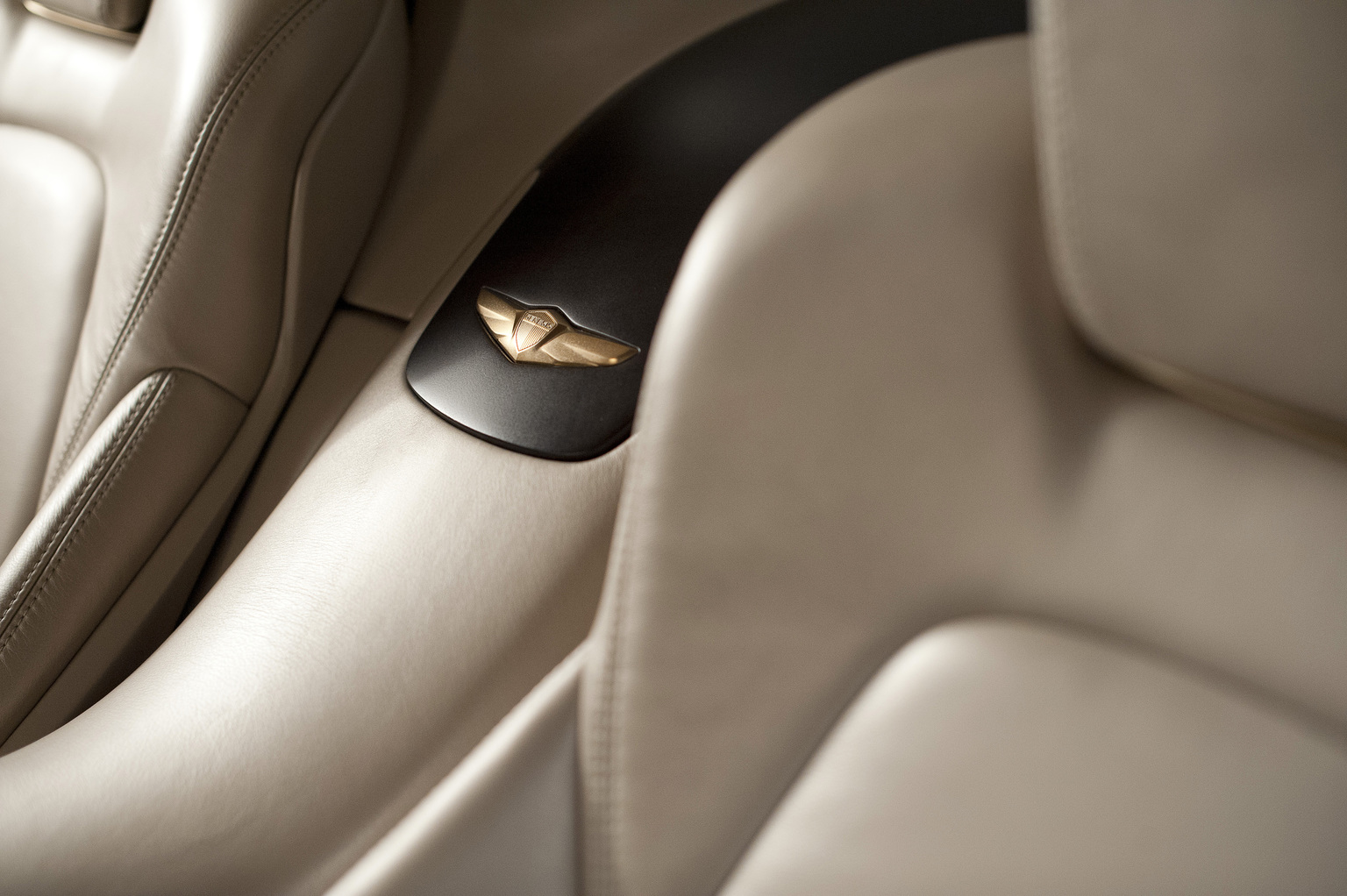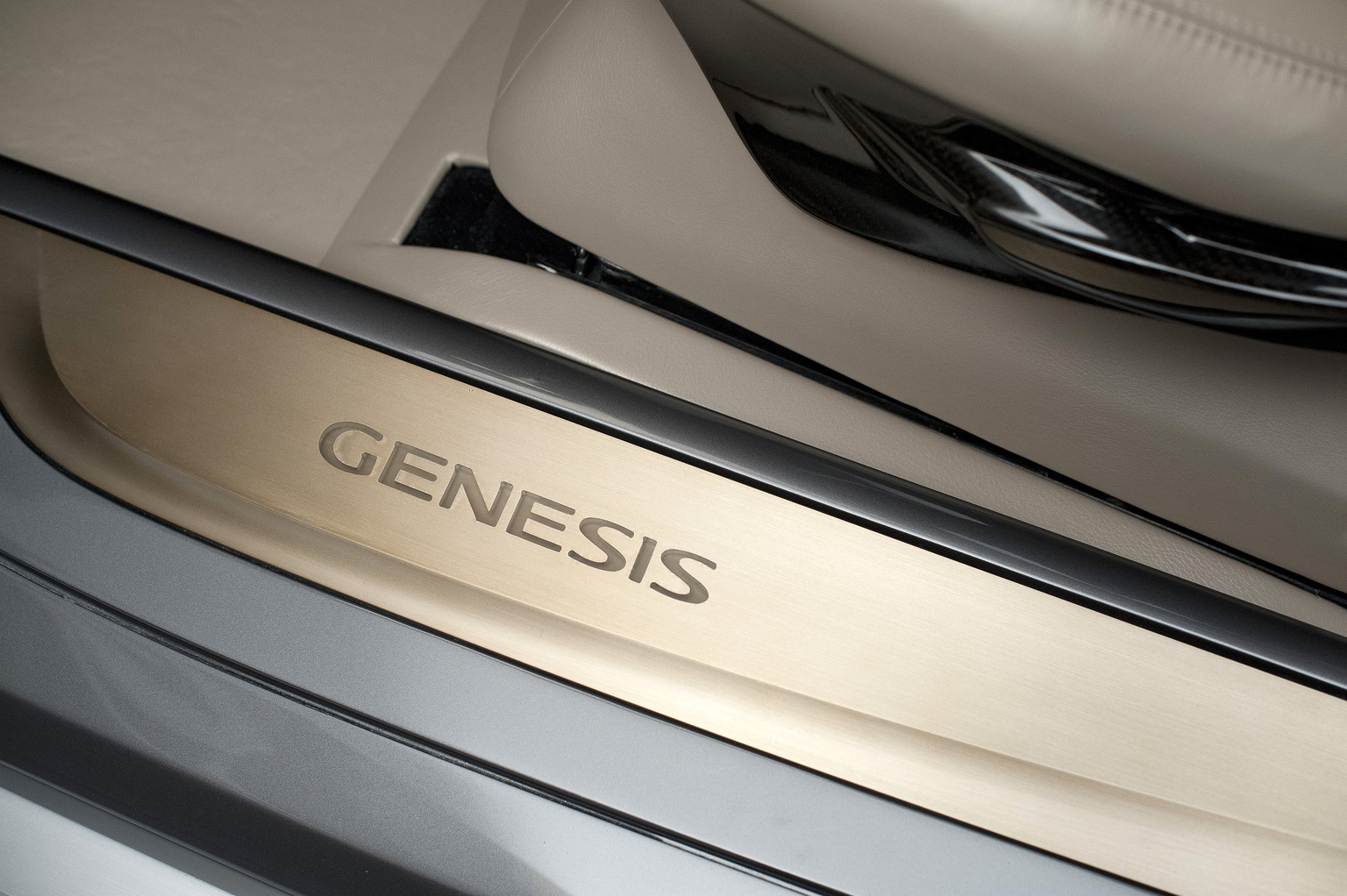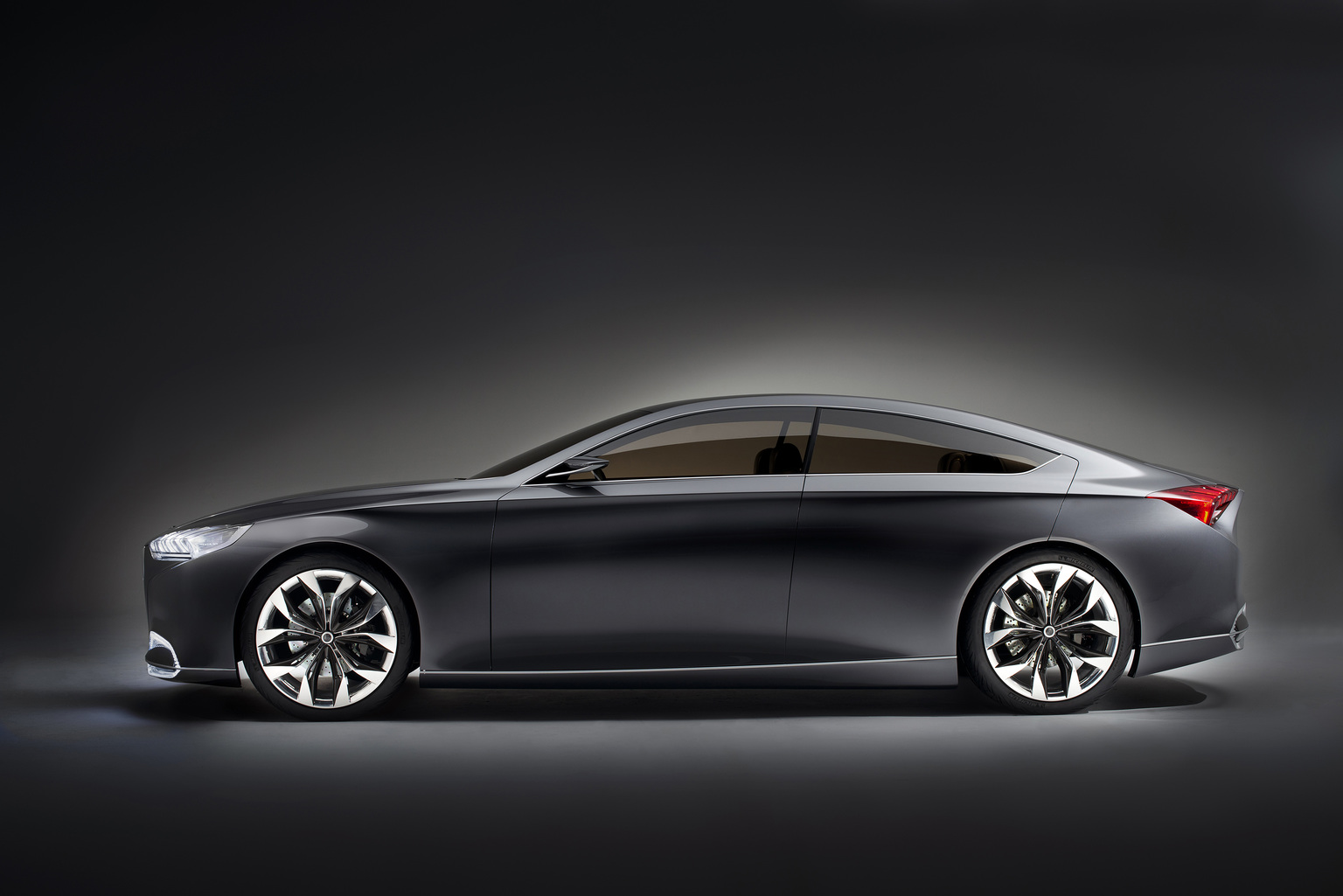2013 Hyundai HCD-14 Genesis
Hyundai Motor today presented a glimpse of its future design directions for its premium vehicles at the 2013 North American International Auto Show (NAIAS), accelerating its push into the global luxury segment.
Hyundai Motor America, a wholly-owned subsidiary of Hyundai Motor Co., staged a world premiere of the HCD-14 Genesis concept at Cobo Center. The luxury concept also hints at the company’s future premium convenience features by showcasing cutting-edge technologies such as innovative eye-tracking and gesture-based controls. Sales of Hyundai’s luxury vehicles have been posting significant gains worldwide, especially in the U.S., China and the Middle East.
“Hyundai’s Genesis and Equus models are now recognized as serious contenders in the global luxury market. Our concept vehicle today will further raise Hyundai’s premium brand image,” said Tak Uk Im, Chief Operating Officer (COO) and Head of Hyundai Motor’s International Operations Division in Seoul. “Our focus going forward is to strive for brand innovation based on quality.”
In 2012, Hyundai’s top end models such as the Genesis and Equus, saw a 24 percent sales increase outside Korea compared to the previous year. In particular, in the Middle East region, sales of the two models reached 4,132 units, an increase of more than 45 percent from a year earlier. For the first time, Equus was named 2012 Car of the Year by the leading Middle East car magazine, Sport Auto.
In the U.S., Hyundai’s largest luxury market outside of Korea, Hyundai has also been steadily expanding its market share. Following the success of the Genesis, which was chosen as the 2009 North American Car of the Year, Equus sales are showing strong momentum since its launch at the end of 2010. In the 16th annual Strategic Vision Total Value Awards, the Equus beat out competitors like BMW and Mercedes to take first place in the luxury car segment.
“We’ve departed from industry convention in many of our premium product, marketing, sales and service approaches, and it’s worked out pretty well, with Genesis and Equus now delivering a nine percent retail market share in their premium segments, higher than the five percent retail share Hyundai brand achieves in the overall industry,” said John Krafcik, president and CEO, Hyundai Motor America. “This success paves the way for a new generation of rear-wheel drive premium products. HCD-14 Genesis gives a hint of the design direction we’ll be taking, and an indication of the focus we’re placing on driving dynamics and technology.”
Fluidic Precision Design
HCD-14 Genesis conveys a fluidic-precision, liquid-metal design language. Craftsmanship quality is conveyed via gemstone-like design surfaces. A bold front fascia surrounds brushed metal grille surfaces with a deep vertical grille opening. The corners of the rear hood incorporate heat extractor design accents that integrate seamlessly with exterior mirror design. From the side view silhouette, classic rear-drive sport sedan proportions are conveyed by an extended dash-to-axle length, short overhangs, large-diameter wheels, sharply-tapered greenhouse, and short rear deck. Large wheels were developed from a mix of premium lightweight alloys with carbon fibre surrounding the voided areas of the wheel design.
“We instilled HCD-14 Genesis with a premium-sport 4-door coupe road presence,” said Christopher Chapman, chief designer, Hyundai Design North America. “Its sleek and lightweight silhouette does not punish the wind, but uses fluidic precision with dramatic surfacing that conveys natural restraint. Inside, a driver-centric cockpit prioritizes dramatic sculpture over infotainment button overload. Laminated and milled-wood detailing delivers a fresh, topographical map-like visual interest throughout the cabin-length centre console.”
Rear Door Cabin Access
Opening the rear door reveals a rear-hinged configuration, with a single, oversized, brushed-aluminium hinge articulating diagonally from the rear door cutline. With both doors open, HCD-14 Genesis has an inviting and commodious cabin ambience. Inside the cabin, a double-cresting-wave centre console design carries from the instrument panel through to the rear seats. This design-wave theme further influences the interior door handles and rear headrest hoods. Gauges and driver data are provided via an eclectic fusion of both analogue and digital sources, with aviation-derived design cues. The driver-focused cockpit offers an asymmetrical centre stack, with critical driving functions separated from passenger comfort functions. The centre console even includes an iPad® tablet storage station, keeping it secure in spirited driving.
Active Driver Safety
While the HCD-14 Genesis exterior design makes a statement all its own, the driver’s environment is where its technological innovation breaks new ground. Ergonomics engineers eliminated the traditional centre stack, developing an intuitive driver interface system that allows the HCD-14 driver to better keep his eyes on the road. Freed from traditional design restrictions, designers created a controls layout devoid of intimidating clusters of buttons and knobs. Using state-of-the-art driver eye-tracking and 3-D hand-gesture recognition, HCD-14 Genesis is able to recognize driver commands free from the distractions associated with manual controls. Once a specific feature is selected via eye-tracking, thumb controls or gesture recognition can be used to select navigation, infotainment, audio, HVAC, and even smart-phone connectivity functions. This intuitive interface provides the driver with complete control while keeping his eyes safely above the cowl plane, using a windshield heads-up display (HUD) for minimal driving distraction. This proprietary interface represents Hyundai’s vision for future vehicle HMI and sets a new benchmark in active driver safety technology.
Vehicle Dynamics
HCD-14’s innovative eye-tracking and gesture-based controls reduce typical driving distractions, resulting in a more focused driver able to better appreciate the day-to-day satisfaction of exceptional vehicle dynamics. To this end, HCD-14 Genesis vehicle dynamics take the driver to a new level of involvement, focus, and control. An ultra-rigid chassis with strategic use of high-tensile steel provides a vault-like platform for the rear-drive powertrain configuration. Sophisticated five-link front and rear suspension reduces suspension-travel changes to camber and toe for consistent grip out of bends. A multi-mode power steering system retains road feel and feedback advantages while yielding the efficiency benefits of an electronic system. Low-profile performance tires yield outstanding turn-in response, mid-corner grip, and road feel. A sophisticated yaw-control system provides multiple driver-selected options for changing road conditions and driving preferences. Such an advanced complement of tarmac-gripping technologies requires an equally-impressive powertrain to be fully exploited, and the Hyundai developed Tau® V8 engine is more than up to the task.
Tau® V8 Power
The HCD-14 Genesis powertrain features the award-winning Hyundai Tau® V8 engine, displacing 5.0-liters, with direct injection and Dual Continuously Variable Valve Timing (D-CVVT), for impressive power, low emissions and superb efficiency. HCD-14 Genesis uses optical recognition to identify the driver and initiate the starting sequence, while gear selection for the 8-speed automatic transmission is performed via paddle shifters. HCD-14 Genesis exhaust is ceramic-lined and was tuned for minimal backpressure, maximum high-rpm horsepower, and a deep baritone note, with cooling fins integrated into ultra-wide exhaust tips.
PLUG-IN HYBRID
Hyundai also exhibited its first PHEV system at the show. Based on a mid-sized sedan concept, the PHEV showcased Hyundai’s latest technological developments. Hyundai aims for mass production of PHEV based on this system. Powered by 2.0 GDI engine, the next-generation PHEV runs 32km on a single charge in all-electric mode, and when the battery power falls to a certain level, it automatically switches to hybrid mode, enabling longer driving distances. The battery can be fully charged at home in about three hours.
“Plug-in Hybrid Electric Vehicles will surprise drivers with its economic driving experience. A bigger battery allows for longer driving ranges in the electric-mode, while the automatic switch to hybrid mode when battery is low eliminates the range anxiety that has plagued electric vehicles,” said Ki-Sang Lee, Head of Hyundai Motor’s Eco Friendly Vehicle R&D Centre. “To flexibly respond to government policies and market demands, Hyundai is studying and investing in a wide range of eco-friendly technologies such as the PHEV, Hybrid Electric Vehicles (HEV), Electric Vehicles (EV) and Fuel Cell Electric Vehicles (FCEV). Hyundai will continue to take the lead in the future of eco-friendly technology.”
2013 Hyundai HCD-14 Genesis Gallery
See full 2013 Hyundai HCD-14 Genesis Gallery here
In Detail
| submitted by | admin |
| type | Concept / Prototype Car |
| released at | 2013 NAIAS |
| built at | USA |





